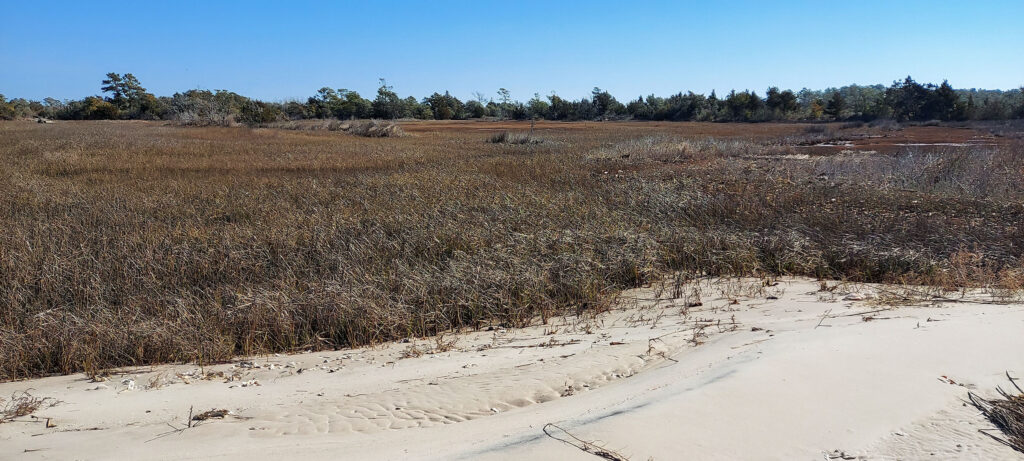As we confront the escalating threats of climate change, there is growing interest in the potential of restored nature to offer a sustainable and effective response to the challenges posed by sea-level rise (SLR). Previous research has shown that by restoring wetlands we can enjoy a range of benefits, including enhanced protection against shoreline erosion, improved water quality, carbon sequestration, and thriving wildlife habitats. Projects that involve the strategic creation or restoration of habitats for the protective benefits that they provide are often referred to as Nature Based Solutions (NBS).
One of the most significant hurdles to adopting NBS has been the uncertainty surrounding its long-term performance. A recent study published in Frontiers in Marine Science addresses that knowledge gap by providing quantitative estimates of the benefits of NBS for mitigating the impacts of projected SLR over time. Using SLAMM (Sea Level Affecting Marshes Model), researchers from NOAA NCCOS, EA Engineering Science and Technology, and the University of North Carolina assessed the potential long-term benefits of a proposed wetland restoration. The project, which uses dredged sediments to restore coastal fringing wetlands to their historical extent, would be located adjacent to the primary runway of a regional airport in coastal North Carolina.

Evaluation of the designed shoreline restoration under three future SLR scenarios showed both the benefits and limitations of the project. Implementation of the designed restoration would likely result in an increase in total marsh habitat by about 50 to 80 percent through mid-century compared to a scenario with no restoration. However, the study also highlighted the need for ongoing monitoring and adaptation to ensure the restoration project can achieve its intended objectives. Beyond around 2060, the model predicts that rising sea levels will likely outpace the marsh’s ability to keep up, resulting in the eventual submergence of the marsh within the project area—even under the restored scenario—by the end of the 21st century.
This research effort marks an essential step forward in understanding the behavior of fringing coastal wetlands and the efficacy of NBS in boosting coastal resilience over time. The results will play a crucial role in informing cost/benefit analyses and guiding the development of sustainable coastal strategies. By embracing sustainable development and adapting to our changing environment, coastal communities can forge a path towards a more resilient future.
This project is part of NCCOS’s Effects of Sea Level Rise (ESLR) Program. Visit the project page to learn more about this effort.
Citation: Familkhalili R, Davis J, Currin CA, Heppe ME and Cohen S (2023) Quantifying the benefits of wetland restoration under projected sea level rise. Front. Mar. Sci. 10:1187276. doi: 10.3389/fmars.2023.1187276
